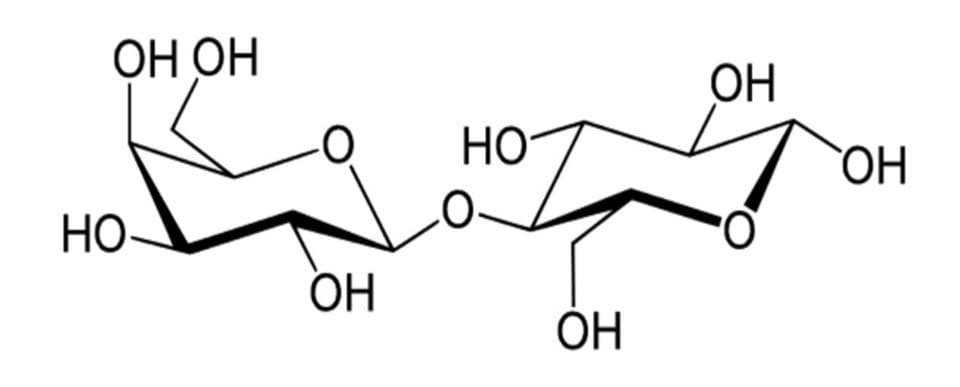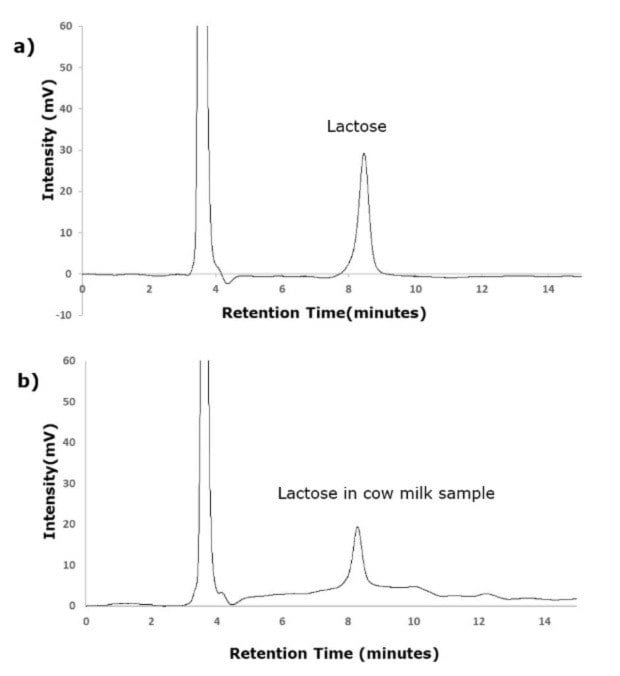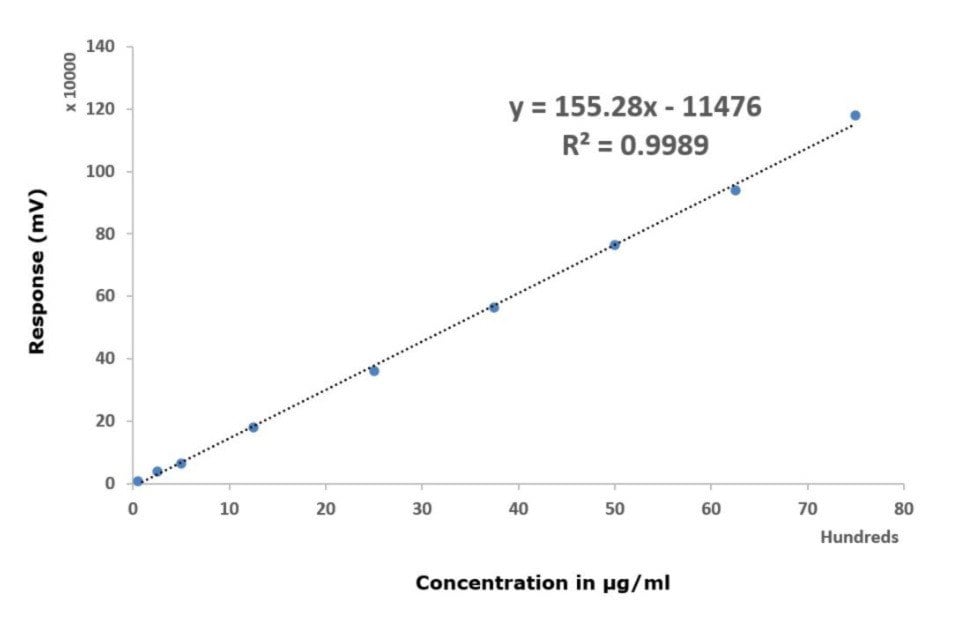Analysis of Lactose in Milk by HPLC-RI using Chromolith® NH2 Column
INTRODUCTION
Lactose also referred to as milk sugar (Figure 1) is the principal dietary disaccharide component found in milk. The analysis of Lactose in milk is important as it contributes to the sensory and functional properties of milk (1). A considerable number of methods have been developed for the determination of carbohydrates in milk, including older and less sensitive ones, such as gravimetric, polarimetric, enzymatic, or spectrophotometric analysis. Further, the Association of Official Analytical Chemists (AOAC) Method 984.15 utilizes enzymatic hydrolysis of lactose to glucose and galactose at pH 6.6 by β-galactosidase (2). This method is time-consuming and demands extensive reagent preparations.
HPLC is the most popular method of choice to analyze a diverse group of compounds because of its simplicity, speed, and accuracy. Furthermore, the monolithic silica technology of Chromolith® columns enable reliable results with extended column lifetime and reduced need for sample preparation for matrix-rich samples due to its high matrix tolerance. Hence, we demonstrate an application for the determination of Lactose in milk by HPLC-RI using Chromolith® NH2 column for system suitability, linearity, repeatability, percentage recovery, LOD, and LOQ.

Figure 1.Chemical Structure of Lactose

Figure 2.Chromatograms of a) Lactose reference STD solution; b) Lactose in the Cow milk sample

Figure 3.Linearity plot of Lactose reference standard
RESULTS AND DISCUSSION
An isocratic HPLC-RI method for the determination of Lactose in milk was developed using Chromolith® NH2 column. The experimental data indicated excellent linearity with an r2 value of 0.9989 (Figure 3) for the selected concentration range (50– 7500 µg/mL, Table 3). The LOD and LOQ values were estimated as 325 µg/mL and 987 µg/mL, respectively. The method precision for the assay was below 1% RSD and the percentage recovery was found to be ranging from 99 -99.3% (Table 4).
In conclusion, the data for linearity, system suitability, and repeatability of the method suggest its aptness for the assay of Lactose in milk using Chromolith® NH2 column.
Related Materials
References
To continue reading please sign in or create an account.
Don't Have An Account?